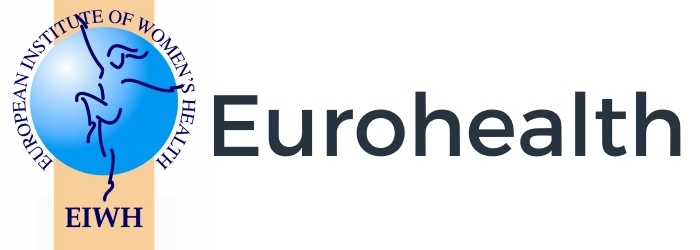Summaries Day 2:
Keynote address: Resetting the Agenda in Women’s Health
Angelica Salvi Del Pero, Senior Advisor, OECD
Ms Salvi Del Pero started by showing that by many measures, women are doing well. Women’s life expectancy exceeds men’ across the OECD, early detection and treatment of breast cancer has improved, and gender gaps in employment have narrowed considerably.
However, gender equality remains an uphill battle. The gender gap from some risky behaviours is narrowing among adolescents, with girls catching up with boys in terms of age of first alcoholic drink and age of first drunkenness.
Women also experience higher rates of mental ill health, such as the prevalence of chronic depression. Women’s socioeconomic disadvantage compounds gender inequalities; for example, social disparities in obesity and overweight are stronger among women, and less educated women are particularly exposed to disability risks.
In terms of old age, unequal ageing is a major challenge for gender equality. Women spend more of their older years in poor health than men, and most informal carers are women. Ms Salvi Del Pero then asked, how can policy be used to reduce this gender gap? Focusing on a life course approach can help reduce gender inequality.
Policies such as placing early-life interventions in health at the top of the policy agenda, promoting equity in paid and unpaid work, including caring duties at all ages, and target adequate levels of retirement income through a combination of safety nets, mandatory pensions, private schemes and pension credits are some practical recommendations.
Panel: Resetting the agenda: Health promotion and disease prevention
Chair: Nina Renshaw, Secretary general, European Public Health Alliance
Ms Renshaw introduced the panel on health promotion and disease prevention by focusing on the main points of the European Union’s competencies on Health and Rights, such as the protection of a high level of human health; protection from substances, environments and circumstances that are harmful to health; and the fundamental rights-based approach ensconced in the Right to Health and Well-being which includes the protection of the most vulnerable and the inclusion of marginalised groups, from the youngest to the oldest.
These points, Ms Renshaw argued, are vitally important to the future of Europe, and helps us to consider the issues when we look at how Europe can do better in the future, and how to best respond to people’s concerns.
She highlighted that health promotion policies and programmes should focus on the well-being of citizens across the lifespan. What should the role of civil society be? How can we improve decisionmaking? What should the responsibilities of policymakers be? Also, what would the future look like if prevention and promotion were fully integrated?
Another crucial issue is to look at the existing gaps and challenges we face in these areas. Specifically, where are women overlooked?
Ms Renshaw concluded by saying that anticipating future needs for citizens across life course and creating cost-effective tailored healthcare solutions means the right strategy, at the right time, for the right person.
Promoting Women’s Wellbeing
The sex and gender perspective has to be considered in all aspects of policy and programme development, from research to implementation of health and wellbeing and disease prevention programmes, it is only then can we achieve gender equity in health for all women across the life-course.
Ms Maguire emphasised the fact that both biological and social factors have a significant impact on health and most of the factors influencing health lie outside the health sector. Investing in women’s health requires a comprehensive life-course approach that includes biological, social and economic considerations, addressing important issues that affect women.
Action must be taken early and at critical points to ensure health and well-being from youth through older age. Collaboration with other sectors, such as education and employment, and with girls and women themselves are key to successful policy and programming.
Available evidence must be used to best identify entry points for various interventions and services—both population and individual health for considerations for girls and women at particular points in their life must be taken into account by stakeholders.
Sex and gender are factors that impact prevention of, susceptibility to and diagnosis and treatment of chronic disease.
Ms Maguire recommended a number of points to tackle these issues, starting with integrating the consideration of sex and gender when policies and programmes were being developed and at the implementation stage.
It is only then can we achieve gender equity in health for all women across the life course in Europe.
WHO strategy on women’s health: a transformative agenda
Isabel Yordi, World Health Organisation Europe 
Similarly, another poster depicted a pair of boxer shorts with flames coming out of them and the line “Hot weekend? Man Up Monday! Get tested for HIV and STIs and restock on condoms every Monday!”, where the message was that a real man goes out and chases girls all weekend long, because that is what men do.
Ms Yordi argued that messages should be framed more positively, in terms of well-being and positive messages, and not by perpetuating gender stereotypes.
Ms Yordi concluded her presentation with a set of recommendations, starting with gender transformative health promotion; empowering women and girls, ensuring that intersectionalities between gender and other forms of discrimination are addressed; that gender and social determinants analysis should inform health promotion; strengthening the evidence base of interventions; bringing gender into public health capacities; and finally, engaging men and challenging harmful masculinities.
Ms Yordi outlined the changes that have taken place in women’s health over the previous 20 years, and the strategies on women’s health that the WHO European region have developed throughout the years.
With this in mind, WHO European Region have adopted a life-course approach to women’s health where they emphasise strengthening governance for women’s health and well-being; advocate eliminating discriminatory values, norms and practices that affect the health and well-being of women and girls; promote tackling the impact of gender and other social, economic, cultural and environmental determinants; and support improving health systems responses to women’s health and wellbeing.
Also, Ms Yordi spoke about the commercial determinants of health, and used images to illustrate how these could be used negatively.
The negative examples were health promotion campaigns that focused on gender and behaviour negatively – for example, a poster of a man wearing make-up in an obviously rudimentary way with the tagline “If you drink like a man, you might end up looking like one” – the implication being that women should not drink not to mind their own health, but to mind their feminine looks and image.
Awareness & behaviour change
Susanne Løgstrup, Director, European Heart Network
Ms Løgstrup began by discussing the burden of cardiovascular disease in Europe.
It is a fact that more women than men die from cardiovascular disease, however most women do not know this. Awareness campaigns for heart attacks often focus on male symptoms; women therefore do not always recognise the symptoms; they delay seeking medical assistance and they arrive later at the hospital.
Ms Løgstrup then elaborated on the fact that women are less likely to get certain treatments for cardiovascular disease compared to men: women are less likely to be prescribed aspirin, less likely to receive sophisticated pacemaker models, and less likely to be recommended for potentially life-saving cardiac surgery.
This may be because women are still under represented in clinical trials, a problem which comes up time and time again. There are important sex differences in the pathophysiology of CVD that are not understood, and the safety and efficacy of cardiovascular drugs and devices may vary by sex.
Ms Løgstrup suggested that the first step in personalised medicine is proper attention to sexspecific characteristics.
Gender pay gap. Its impact beyond the monthly pay slip
Caroline Costongs, Director, EuroHealthNet 
Ms Costongs introduced EuroHealthNet and their recently published policy briefing on gender and health inequality, highlighting three main points from this.
Point one covered the importance of considering gender aspects when trying to reduce health inequalities. Gender differences impact on and contribute to less favourable socio-economic determinants for women; a fifth of women living in poverty do not work due to caring and domestic responsibilities; the gender pay gap in the EU is 16%, the equivalent of women being paid until the end of October and working for free for the rest of the year, and contributes to women having lower pensions. These inequalities can lead to many health problems, in forms of stress, lower quality of living and working conditions, and limited access to health care.
The next point discussed was what tools exist to help raise awareness of such gender inequities. On an EU level, the EU Semester economic cycle can help advance an issue. As an example, Ms Costongs cited EuroHealthNet work done in Germany, where CountrySpecific Recommendations have advocated that incentives to work should be improved and affordable child care services and all-day schools should be available.
Another policy tool for tackling gender inequalities is the European Pillar of Social Rights, which also feeds into the EU Semester through its Social Scoreboard, and calls for increased parental leave for both parents and supports men in their role as fathers.
Gender pay gap. Its impact beyond the monthly pay slip.
Ms Costongs’ third point highlighted good initiatives related to health promotion taking place at local level, which should be cherished, promoted, and scaled up.
One such example was the “neighbourhood mothers” project in Berlin, where mothers in a district with high levels of migrants received training focused on topics such as health promotion, nutrition, kindergarten/school system, sexual development, use of health services, and language education. These 440 “neighbourhood mothers” visited other mothers in their home to teach them what they had learnt. In total, 10,000 families were visited and the project’s far reach was a success. Crucial to this was the fact that the project had political and financial support, as well as successful collaboration with different institutions.
In summary, Ms Costongs emphasised that improving women’s health and wellbeing is a socioeconomic and cultural exercise, and not only a task for the health care system – holistic approaches are needed. The interlinkages between the Sustainable Development Goals, for example, “Good health and well-being” and “Gender equality” can offer innovative solutions.
Women and dementia: the time is now
Dr Maria Teresa Ferretti, Women’s Brain Project
Dr Ferretti introduced her talk by describing the prevalence of dementia worldwide and in Europe, with 8 million people in Europe estimated to have the disease.
The prevalence of dementia is much higher in women than in men.
The risk factors for dementia begin early in life, with the level of education a person attains being a predictor of the chance of getting dementia.
By mid-life, health issues such as hypertension, obesity and hearing loss are additional risk factors for the disease, and by the time a person has reached old age, issues such as smoking, depression, inactivity and isolation all contribute to the risk of getting dementia.
Dr Ferretti explained that all these risk factors are higher in women, such as low education and depression. Dr Ferretti concluded by outlining her recommendations to improve the situation of women in terms of dementia risk factors. She spoke about the need to promote women’s mental health right from the start in areas such as education, occupation, and support to caregivers including caregiving absence leave.
Panel: Resetting the agenda: Research & personalised medicine
Chair: Professor Ineke Klinge, Chair of the H2020 Advisory Group for Gender at European Commission
Professor Klinge outlined the issues surrounding research and personalised medicine by stating that the quality and accountability of research is affected negatively when sex and gender are not taken into account.
Integrating the sex and gender dimension in research and innovation is an essential aspect of research excellence, as it increases the societal relevance of knowledge, technologies, and interventions.
It also contributes to the production of goods and services better suited to potential markets. Tools for researchers and evaluators have been developed to facilitate addressing sex and genderrelated factors in biomedical and health research, and many science funding bodies have issued policies in support of this.
Professor Klinge then looked at the main challenges in Europe at the moment, which are integrating age and sex in drug development and testing for adults; differences in weighting the evidence between regulatory bodies; and defining how we see the relationship between gender medicine and personalised or precision medicine. In order to address these challenges, Professor Klinge recommended that phase 1 and 2 drug trials include 50 percent women, women over 70 years old, and collect hormone status.
She concluded by suggesting that peer reviewers and evaluators be provided with/required to have training to improve sex and gender competency, for bonuses to be considered for proposals that include sex and gender analysis, and invest in the younger generation in terms of awareness and including sex and gender in the curriculum.
Personalised medicines and implementing the gender dimension in health research
Dr Gesa Hansen, Directorate Health, DG Research & Innovation 
Dr Hansen began by describing Horizon 2020 gender equality strategy, which focuses on specific topics for sex-specific issues and diseases in all areas, for example cancer, ageing, and so on.
Another topic is that of integrating the gender dimension in research and innovation content to improve the scientific quality and societal relevance of the produced knowledge.
In terms of personalised medicine, the focus is on it as a holistic approach, starting from the citizen for better prediction, prevention and treatment. Such a shift in care models still requires much work, and advances in personalised medicine should be accessible to all citizens. There is still a long way to go but many Member States (MS) and regional stakeholders are interested in the approach.
Also, personal medicine is an area for obvious inclusion of the gender dimension and sex disaggregated data – however, for other areas in health research awareness-raising of the importance of including a gender dimension is needed.
Dr Hansen then elaborated on some of the central issues in the area. Ownership, security and privacy of citizen/patient data in view of prevention and treatment is necessary, and digital technologies and innovations are important issues in this field. A public consultation carried out on the issue found that Europeans are very willing to share data for research purposes, even more than for their own treatment – data analysis is only possible based on such willingness to enable access to these data.
Personalised medicines and implementing the gender dimension in health research
Summarising her points, Dr Hansen emphasised the need to provide targeted training on sex and gender in research content, and a redefinition of the way sex and gender analysis is requested in the H2020 topic text.
Finally, she spoke about the need to overcome barriers such as standards for data quality and reliability, standardisation of health records, common health- related cybersecurity standards, and support for interoperability with technical standards.
How precise is precision medicine?
Professor Orla Sheils, Molecular Pathology School of Medicine and Director TTMI, Trinity College Dublin
New frontiers in health care are being created by the promise of personalised medicine. As genomics-focused pharmacology begins to play a greater role in cancer treatment, companion diagnostics have the potential to change the future of oncology. This, professor Sheils argued, will change how we see cancer – with increased success rates we will have increased numbers of cancer survivors, and cancer will be viewed as a chronic disease, which in turn will directly impact the hospitals of the future.
This will bring with it a number of issues, such as challenges with clinical trial design; shift from remedial to predictive heath care; multi-morbidities with a complex interplay between factors and chronic disease; cancer survivorship vs cure and the role and impact of active surveillance; and a focus on wellbeing.
To address these issues, Professor Sheils recommended a holistic person-centred approach to precision medicine, a plan for screening, diagnosis and monitoring in the community, and the importance of enabling people to thrive, and not just simply survive.
Women’s representation in clinical trials
Professor Dr Marco Stramba-Badiale, Director, Department of Geriatrics and Cardiovascular Medicine, IRCCS Istituto Auxologico Italiano, Milan, Italy
Dr Stramba-Badiale outlined the importance of the topic of women’s representation in clinical trials by explaining that gender and sex differences in the clinical presentation of cardiovascular diseases have been demonstrated, and some therapeutic options may not be equally effective or safe in men and women. Sex differences in pharmacokinetics, pharmacodynamics and physiology may contribute to a different response to drugs in women than in men. Preventative and therapeutic interventions should therefore be tested in populations that fairly represent the gender distribution for the condition/group at risk.
However, in Europe women are still under-represented in randomised clinical trials, and the results for men and women are not reported due to the underpowering for the analysis by sex and gender. The outcome of this is that the majority of therapeutic interventions are tested for safety and efficacy in mainly male populations.
Dr Stramba-Badiale explains why women are underrepresented in such clinical trials, for example, the low occurrence of outcomes in females which may affect the cost of the study; the lower willingness of women to be enrolled due to their misconception of risk of cardiovascular diseases; and difficulties in terms of transportation or support for follow-up visits.
Addressing women’s representation in clinical trials:
How can we address this issue effectively and practically?
Dr Stramba-Badiale suggested that enrolment criteria and follow-up duration in clinical trials should allow the inclusion of women at risk of developing events, as well as ensuring a minimum enrolment for women until a pre-specified proportion is reached.
External barriers to the enrolment of women need to be addressed, in particular, transportation difficulties for follow-up visits.
Finally, he urged regulatory agencies to adopt stricter rules on the inclusion of women in clinical trials, and a systematic gender and sex analysis.

